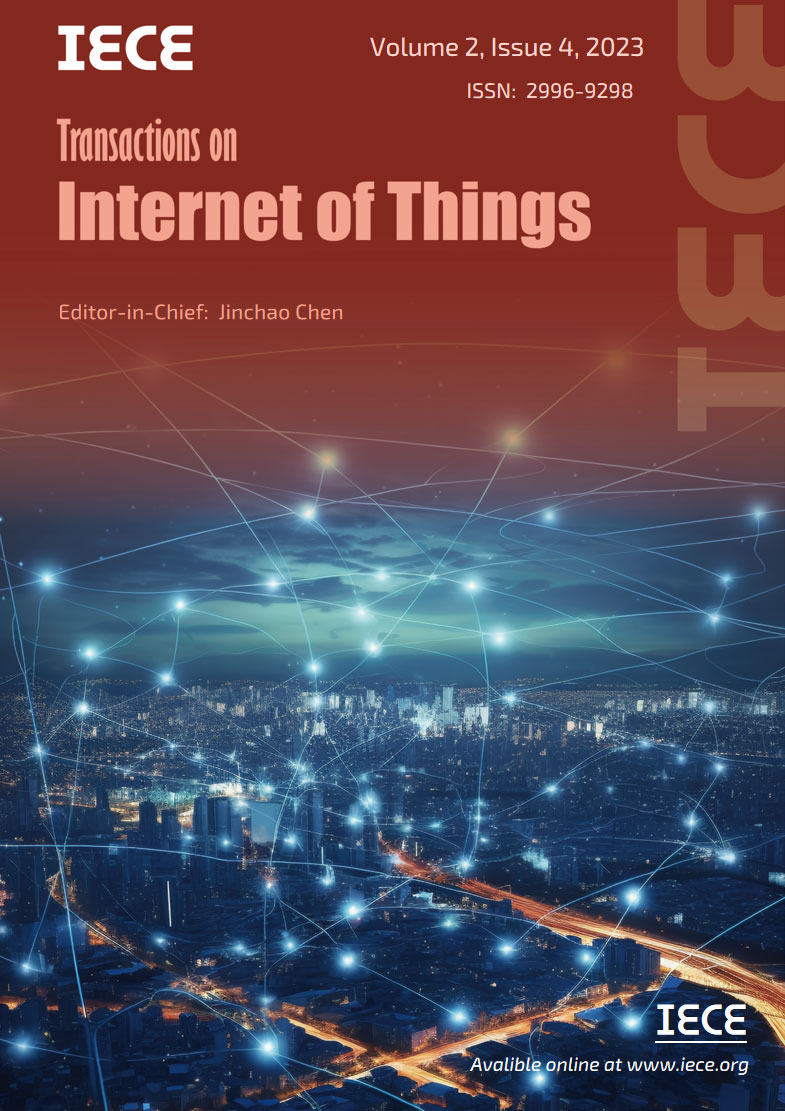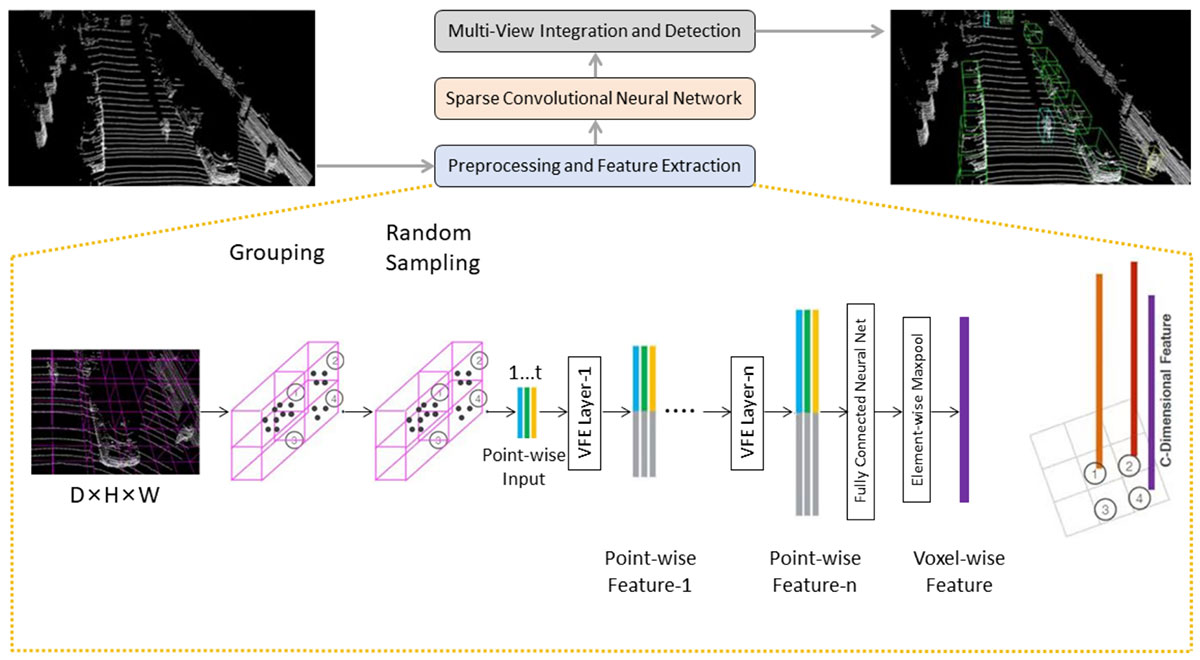IECE Transactions on Internet of Things
ISSN: 2996-9298 (Online)
Email: [email protected]


 Submit Manuscript
Edit a Special Issue
Submit Manuscript
Edit a Special Issue

[1] Krizhevsky, A., Sutskever, I., & Hinton, G. E. (2012). Imagenet classification with deep convolutional neural networks. Advances in neural information processing systems, 25.
[2] Simonyan, K., & Zisserman, A. (2014). Very deep convolutional networks for large-scale image recognition. arXiv preprint arXiv:1409.1556.
[3] Hu, H., Gu, J., Zhang, Z., Dai, J., & Wei, Y. (2018). Relation networks for object detection. In Proceedings of the IEEE conference on computer vision and pattern recognition (pp. 3588-3597).
[4] Pan, X., Xia, Z., Song, S., Li, L. E., & Huang, G. (2021). 3d object detection with pointformer. In Proceedings of the IEEE/CVF conference on computer vision and pattern recognition (pp. 7463-7472).
[5] Wang, D. Z., & Posner, I. (2015, July). Voting for voting in online point cloud object detection. In Robotics: science and systems (Vol. 1, No. 3, pp. 10-15).
[6] Geiger, A., Lenz, P., & Urtasun, R. (2012, June). Are we ready for autonomous driving? the kitti vision benchmark suite. In 2012 IEEE conference on computer vision and pattern recognition (pp. 3354-3361). IEEE.
[7] Li, B., Zhang, T., & Xia, T. (2016). Vehicle detection from 3d lidar using fully convolutional network. arXiv preprint arXiv:1608.07916.
[8] Chauhan, R., Ghanshala, K. K., & Joshi, R. C. (2018, December). Convolutional neural network (CNN) for image detection and recognition. In 2018 first international conference on secure cyber computing and communication (ICSCCC) (pp. 278-282). IEEE.
[9] Fathy, M., & Siyal, M. Y. (1995). An image detection technique based on morphological edge detection and background differencing for real-time traffic analysis. Pattern Recognition Letters, 16(12), 1321-1330.
[10] Liang, S., Li, Y., & Srikant, R. (2017). Enhancing the reliability of out-of-distribution image detection in neural networks. arXiv preprint arXiv:1706.02690.
[11] Suthaharan, S., & Suthaharan, S. (2016). Support vector machine. Machine learning models and algorithms for big data classification: thinking with examples for effective learning, 207-235.
[12] Maturana, D., & Scherer, S. (2015, September). Voxnet: A 3d convolutional neural network for real-time object recognition. In 2015 IEEE/RSJ international conference on intelligent robots and systems (IROS) (pp. 922-928). IEEE.
[13] Maturana, D., & Scherer, S. (2015, May). 3d convolutional neural networks for landing zone detection from lidar. In 2015 IEEE international conference on robotics and automation (ICRA) (pp. 3471-3478). IEEE.
[14] Graham, B. (2014). Spatially-sparse convolutional neural networks. arXiv preprint arXiv:1409.6070.
[15] Graham, B. (2015). Sparse 3D convolutional neural networks. arXiv preprint arXiv:1505.02890.
[16] Jampani, V., Kiefel, M., & Gehler, P. V. (2016). Learning sparse high dimensional filters: Image filtering, dense crfs and bilateral neural networks. In Proceedings of the IEEE Conference on Computer Vision and Pattern Recognition (pp. 4452-4461).
[17] Chen, H., Dou, Q., Yu, L., & Heng, P. A. (2016). Voxresnet: Deep voxelwise residual networks for volumetric brain segmentation. arXiv preprint arXiv:1608.05895.
[18] Dou, Q., Chen, H., Yu, L., Zhao, L., Qin, J., Wang, D., ... & Heng, P. A. (2016). Automatic detection of cerebral microbleeds from MR images via 3D convolutional neural networks. IEEE transactions on medical imaging, 35(5), 1182-1195.
[19] Prasoon, A., Petersen, K., Igel, C., Lauze, F., Dam, E., & Nielsen, M. (2013, September). Deep feature learning for knee cartilage segmentation using a triplanar convolutional neural network. In International conference on medical image computing and computer-assisted intervention (pp. 246-253). Berlin, Heidelberg: Springer Berlin Heidelberg.
[20] Derpanis, K. G. (2010). Overview of the RANSAC Algorithm. Image Rochester NY, 4(1), 2-3.
[21] Khan, K., Rehman, S. U., Aziz, K., Fong, S., & Sarasvady, S. (2014, February). DBSCAN: Past, present and future. In The fifth international conference on the applications of digital information and web technologies (ICADIWT 2014) (pp. 232-238). IEEE.
[22] Zhou, Y., Ren, F., Nishide, S., & Kang, X. (2019, November). Facial sentiment classification based on resnet-18 model. In 2019 International Conference on electronic engineering and informatics (EEI) (pp. 463-466). IEEE.
[23] Bergmann, P., Jin, X., Sattlegger, D., & Steger, C. (2021). The mvtec 3d-ad dataset for unsupervised 3d anomaly detection and localization. arXiv preprint arXiv:2112.09045.
[24] Rudolph, M., Wehrbein, T., Rosenhahn, B., & Wandt, B. (2023). Asymmetric student-teacher networks for industrial anomaly detection. In Proceedings of the IEEE/CVF winter conference on applications of computer vision (pp. 2592-2602).
[25] Bergmann, P., & Sattlegger, D. (2023). Anomaly detection in 3d point clouds using deep geometric descriptors. In Proceedings of the IEEE/CVF Winter Conference on Applications of Computer Vision (pp. 2613-2623).
[26] Cao, Y., Xu, X., & Shen, W. (2024). Complementary pseudo multimodal feature for point cloud anomaly detection. Pattern Recognition, 156, 110761.
[27] Wei, X., Yu, R., & Sun, J. (2020). View-GCN: View-based graph convolutional network for 3D shape analysis. In Proceedings of the IEEE/CVF Conference on Computer Vision and Pattern Recognition (pp. 1850-1859).
[28] Fischler, M. A., & Bolles, R. C. (1981). Random sample consensus: a paradigm for model fitting with applications to image analysis and automated cartography. Communications of the ACM, 24(6), 381-395.
[29] Ester, M., Kriegel, H. P., Sander, J., & Xu, X. (1996, August). A density-based algorithm for discovering clusters in large spatial databases with noise. In kdd (Vol. 96, No. 34, pp. 226-231).
[30] Zhou, Q. Y., Park, J., & Koltun, V. (2018). Open3D: A modern library for 3D data processing. arXiv preprint arXiv:1801.09847.
[31] Rusu, R. B., Blodow, N., & Beetz, M. (2009, May). Fast point feature histograms (FPFH) for 3D registration. In 2009 IEEE international conference on robotics and automation (pp. 3212-3217). IEEE.
[32] He, K., Zhang, X., Ren, S., & Sun, J. (2016). Deep residual learning for image recognition. In Proceedings of the IEEE conference on computer vision and pattern recognition (pp. 770-778).
[33] Russakovsky, O., Deng, J., Su, H., Krause, J., Satheesh, S., Ma, S., ... & Fei-Fei, L. (2015). Imagenet large scale visual recognition challenge. International journal of computer vision, 115, 211-252.
[34] Zagoruyko, S. (2016). Wide residual networks. arXiv preprint arXiv:1605.07146.
[35] Horwitz, E., & Hoshen, Y. (2023). Back to the feature: classical 3d features are (almost) all you need for 3d anomaly detection. In Proceedings of the IEEE/CVF Conference on Computer Vision and Pattern Recognition (pp. 2968-2977).

Portico
All published articles are preserved here permanently:
https://www.portico.org/publishers/iece/